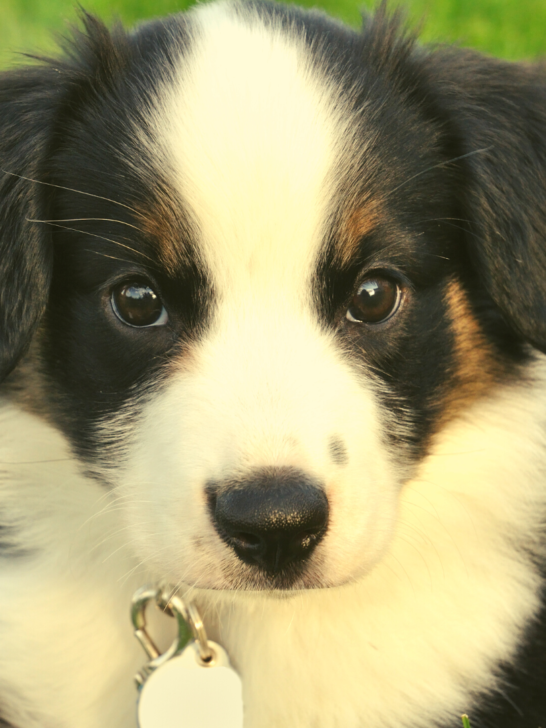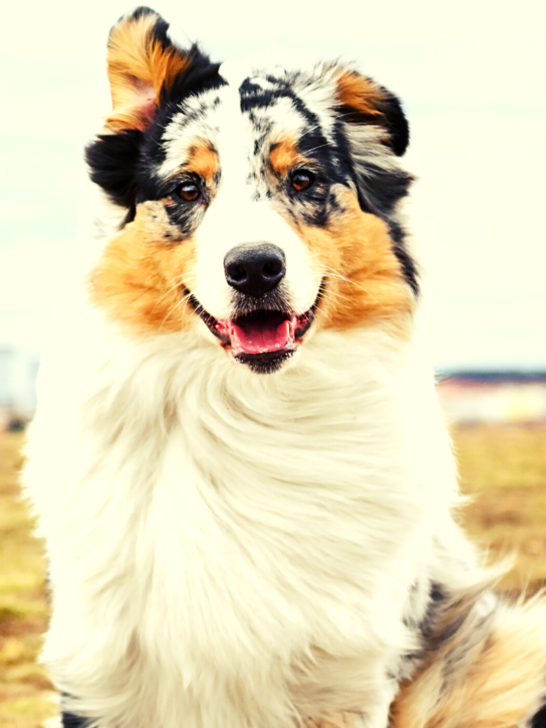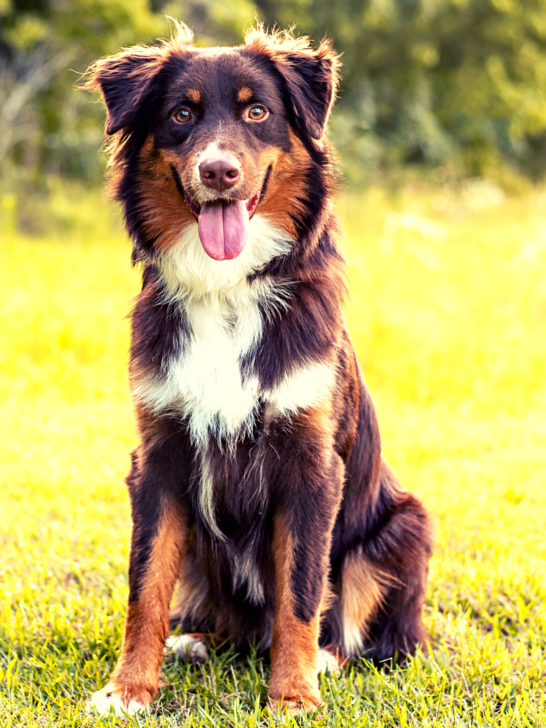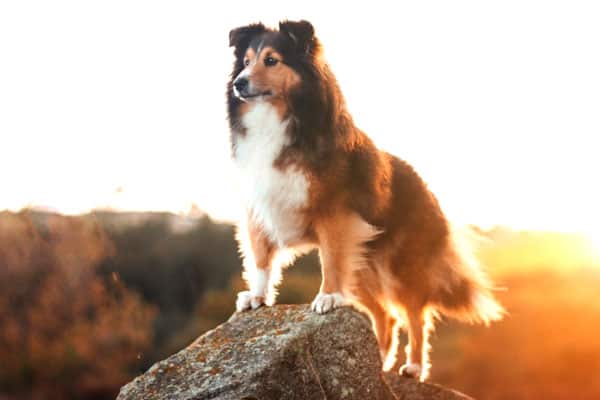Australian Shepherd Corgi Mix: One of Our Favorite Aussie Mixes!
Have you been thinking about bringing an Australian Shepherd Corgi mix into your home?
If this is true for you, then you are probably trying to find out more about the breed to see if they are the right match for you.
Australian Shepherd Corgi mixes might not be as popular as some other mixes, but they can make great family pets for some families. However, they might not always be well-suited to everyone.
This is why it is really important to do your research before bringing a new dog into your home, and this is something that we are going to help with in this article by telling you everything that you need to know about Australian Shepherd Corgi mixes.
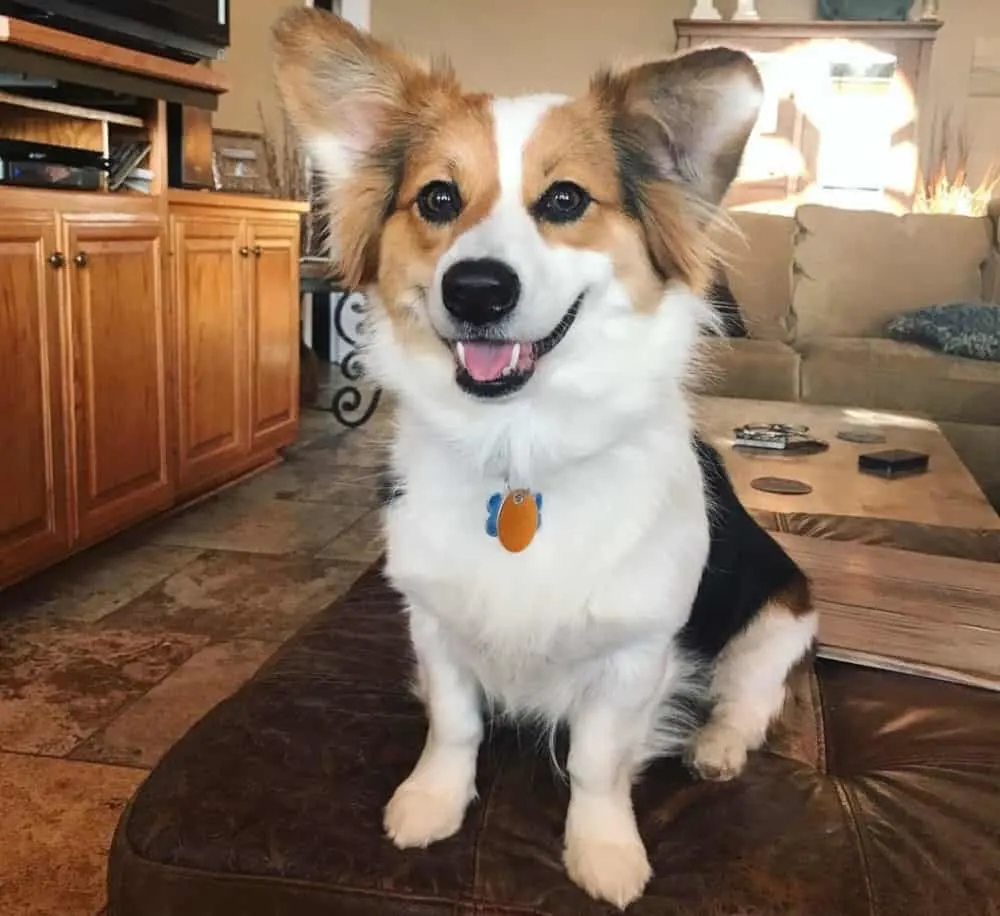
What is An Australian Shepherd Corgi Mix?
A mix between an Australian Shepherd and a Pembroke Welsh Corgi is officially known as an Aussie-Corgi, but there are some people that refer to them as Augie’s.
These dogs are generally really intelligent, and they are also really friendly, with strong herding instincts.
They are medium-sized dogs that are usually long, compact, and quite low slung, but their legs are usually longer than what is normal for a Corgi, and their backs are shorter.
Just like both of their parent breeds, Aussie-Corgis are well-suited to herding responsibilities, but they also work just as well as furry companions in your home, as long as they are kept busy.
Aussie-Corgis are typically extremely out-going and friendly, and they also work well with both children and other animals.
However, they do have really high energy levels, they shed a lot, and they tend to bark quite often. These are all qualities that might not be suitable for some households.
Australian Shepherd
The Australian Shepherd does not come from Australia, like most people would think, they actually are a product of travelling farmers and ranchers.
It is thought that they were created in North America, and they were created as herding dogs, as they have lots of energy and versatility.
They are also highly intelligent, which makes them easy to train and more than suitable for this purpose. This breed has actually been marked as the 17th most popular dog in America.
They are also one of the most popular parent breeds to mix with other breeds to create unique pups.
Corgi
Something that you might not have known is that there are actually two different types of Corgi, which are the Pembroke Corgi and the Cardigan Corgi.
They are both very similar to one another, but there are some subtle differences between the two.
The Aussie-Corgi can have either of these as a parent, as they both have very similar temperaments, health concerns, and lifespans.
They both come from England, and they are also herding dogs by nature that use their short frame to nip at the heels of cattle.
They are often described as affectionate, smart and alert, and it is easy to fall in love with them.
They are the 13th most popular dog breed in America, and Corgi mixes are becoming increasingly popular.
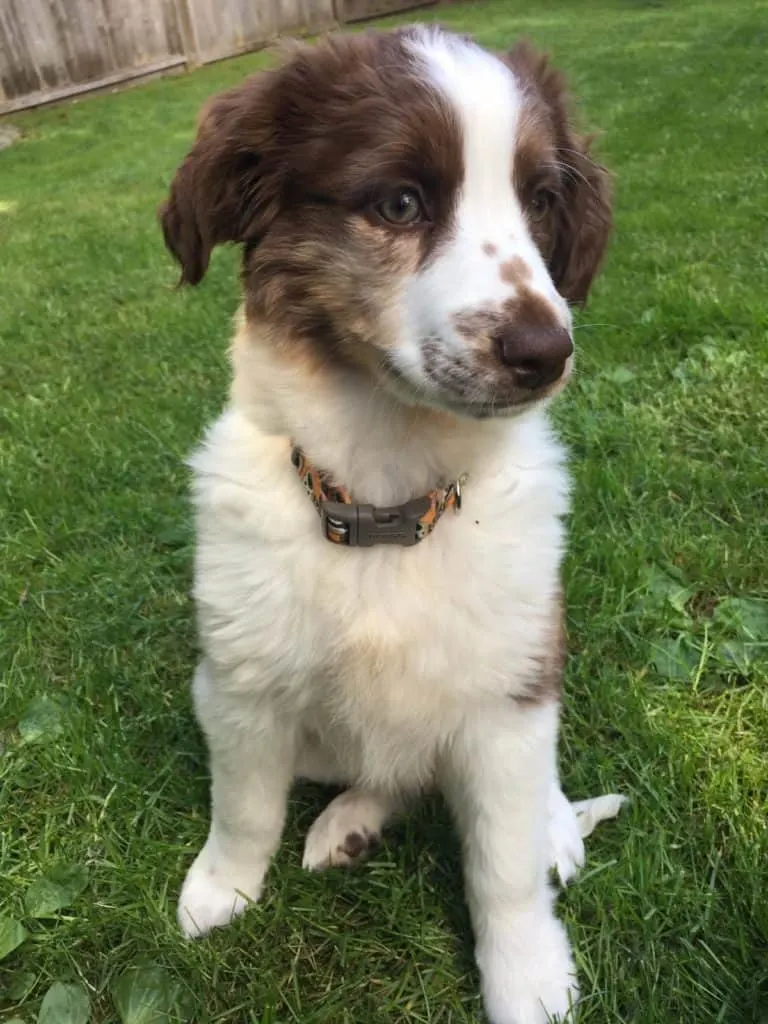
The History of the Aussie-Corgi
Corgis are actually an ancient breed of dog, and their exact origin is unknown, as it has been lost throughout history.
However, there are some experts that believe them to be related to the Swedish Vallhund and Flemish spitz-type dogs.
They were brought to Wales in the 11th century, and they were developed and employed as sheep and cattle herders.
This is because they were low enough to the ground to nip at the heels of livestock, yet agile enough to move out of the way before they got kicked.
Both the Cardigan and Pembroke Welsh Corgi were often interbred until separate titles were developed for them in the 1920s.
The Pembroke Corgi is slightly less heavily boned than the Cardigan Corgi, and they have feet that point directly forward, rather than pointing slightly outward.
The Pembroke Corgi is generally thought to be the more extroverted and affectionate of the two variants.
The Australian Shepherd that is known today was originally developed in the farmlands of the United States in the late 19th century, rather than in Australia, like most people would think.
The breed was developed by cattle and sheep herders that were most likely from Basque shepherding dogs that traveled from Australia to America in the early 1800s.
Australian Shepherds are more than capable in their roles as herding dogs, and they have been crossed with other hard-working stock dogs in America to create more agile and enduring herding dogs.
The combination of both of these breeds usually creates a friendly and energetic animal that has both a playful nature and a strong herding instinct.
Aussie-Corgi Breed Appearance
Aussie-Corgi dogs are still quite new, which means that there can often be quite a bit of variation between the dogs, even of those within the same litter.
Most of the time, the head will be both broad and rounded, with a tapered muzzle.
They have triangular ears that can either stand up or fold forwards or to the side.
Their eyes can range from the almond shape of the Australian Shepherd to the round eyes of the Corgi, and they can come in any combination of browns and blue.
They usually sport a double coat, which features a dense undercoat that is covered by a softer and silkier coat that is also known to be weather-resistant.
The outer coat is usually medium-length, but it has been known to grow longer. Interestingly, they can be born without a tail, with a partial tail, or even with a full-length tail.
However, they should have compact and oval-shaped feet that point forward rather than out.
If their feet do point out, this could be an indication that the dog has been crossed with a Cardigan Welsh Corgi, and not a Pembroke Corgi.

Aussie-Corgi Temperament
The Aussie-Corgi is naturally a great herder due to the history and nature of both of its parents.
They typically have a shorter frame, which means that they could inherit the Corgi’s tendency to nip at ankles, but they could also inherit the great herding qualities of an Australian Shepherd instead.
There is no way of knowing for sure until they get older. You might even find that your Aussie-Corgi tries to herd your family from time to time.
They are great dogs if you are looking for a herding dog with a bit of a twist, but you should know that if there are young children in your household, it can be beneficial to train them out of their herding tendencies.
They are affectionate dogs that love to spend time with their families, and they can also be quite cuddly when they are in the right mood.
The Aussie-Corgi is known to be able to take to strangers within your home well, and this is mostly due to the fact that they are really sociable.
However, this does also mean that they do not like to spend much time on their own, and they can develop separation anxiety if they are left alone for long periods of time.
As well as their amazing herding skills, Aussie-Corgi’s can be a little bit territorial if they feel that you are interfering. This can sometimes lead to excessive barking, which might not be everyone’s cup of tea.
Something that everyone needs to know before bringing an Aussie-Corgi into their home is that they have really high energy levels, and they will need to be constantly kept busy in order to burn off this excess energy.
They tend to enjoy interactive games, long walks, and even agility courses.
Aussie-Corgi Size
The Aussie-Corgi will usually inherit the long body shape of the Corgi and the coat of the Australian Shepherd.
They are likely to be slightly taller than the Corgi, and they will typically stand at around 12 to 18 inches.
They are also likely to weigh somewhere between 25 and 45 pounds, which makes them a medium-sized dog.
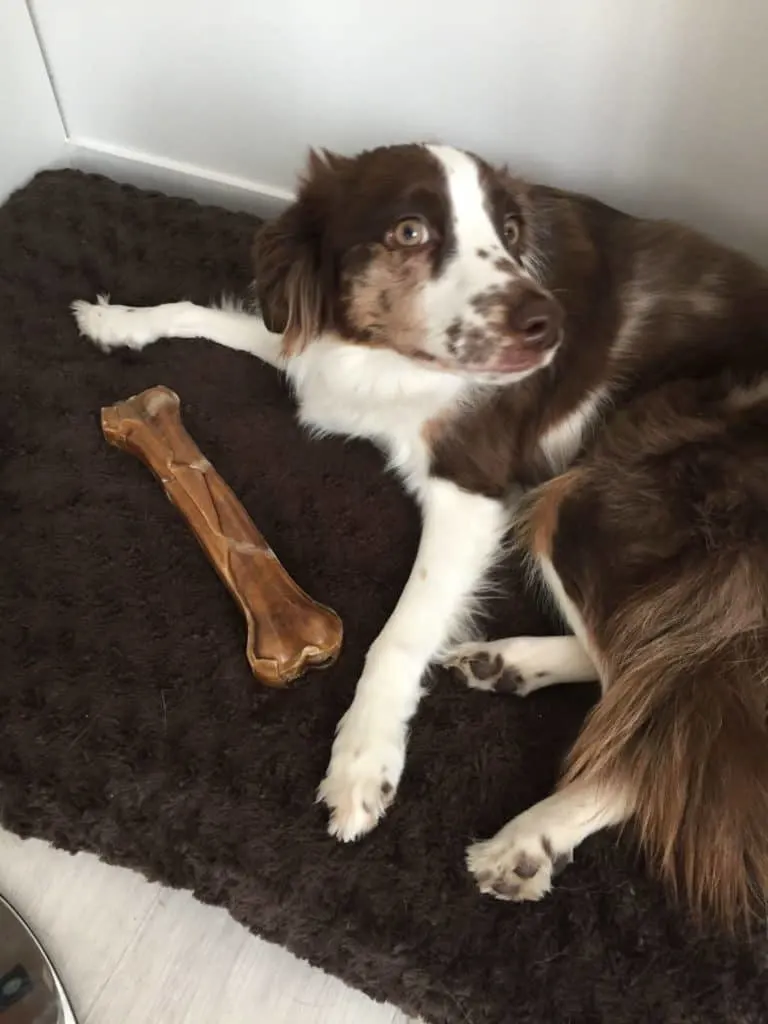
Aussie-Corgi Breed Maintenance
Even though bathing is only required every month or every other month or so for these dogs, they will need to be brushed every single day.
This is to prevent any tangling or matting of the fur and reduce the amount of shed hair in your home.
You should pay some extra attention to any feathering that the dog has, and this is because the fut that is found in these areas will tend to tangle more easily.
Aussie-Corgis usually shed moderately for most of the year, but they will shed quite heavily as the seasons change.
You will also need to check their teeth and ears on a regular basis to ensure that everything is as it should be.
Aussie-Corgi Exercise
Due to the fact that these dogs have a lot of energy that needs to be burned, they will require around 60 minutes of intense exercise every day.
Otherwise, they can develop destructive behavior if they do not have a healthy outlet for all of their extra energy.
They work the best when they have a varied exercise routine, so you can also try to include things like running, agility courses, and games into their exercise.
This will help to keep them physically and mentally exercised.
Just keep in mind that these dogs are at their happiest when they are busy and have something to do.
Aussie-Corgi Training
Aussie-Corgi dogs will need obedience training to make sure that they do not bring their herding techniques into the home where they are not wanted.
If you are struggling to control this type of behavior, it can often be worth bringing in a professional trainer that has experience with this to help.
Aussie-Corgis are also much easier to manage if they have been properly socialized from the puppy stage, as this will help to teach them that new experiences, environments, people, and animals are a normal part of life.
Due to the fact that Aussie-Corgi’s do not like to be left on their own for very long, you might want to invest in crate training to give them a safe space in the home to relax.
It can also give you some peace of mind, knowing that they are not destroying your home while you are out.
They usually respond well to positive reinforcement with their training, so you should reward them with treats for correct behavior and give them lots of verbal praise and encouragement.
They are super intelligent, so training them shouldn’t be too difficult.
Aussie-Corgi Health
The Aussie-Corgi, just like any other mixed breed, is susceptible to any health concern that affects either parent. We will leave some of the main health concerns to be mindful of below.
IVDD
This is a disease that can affect dogs that are shaped like Corgis, and shorter legs and a long spine can mean that they cannot tackle heights.
This can make things like going down the stairs or jumping off the sofa much more difficult than it would be for other dogs.
The spine will bend unnaturally, which can also cause disc ruptures that are seriously painful and can lead to paralysis.
Hip Dysplasia
This is a common health concern that affects most dog breeds, including both the Australian Shepherd and the Corgi.
It is caused by the abnormal formation of the hip joint, which can lead to severe pain and paralysis in later life.
Progressive Retinal Atrophy
This disease affects both dog breeds and will cause deterioration of the retina, which can lead to total blindness.
Aussie-Corgi Diet
An Aussie Corgi will benefit from a high-quality kibble that has a high protein content, as this will keep their muscles in good condition, and provide them with the energy they need.
An Aussie-Corgi will need around 2 to 2.5 cups of kibble each day, but possibly more if they are a working dog.
They can sometimes be picky eaters, which can mean that you have to try out a few foods until they find the one that they like.
As well as this, they can have sensitive stomachs, so a dry kibble with additional fiber can help to support overall gut health.
FAQ:
1. What is an Australian Shepherd Corgi mix?
Answer: An Australian Shepherd Corgi mix, also known as Aussie-Corgi or Augie, is a hybrid breed mixed with the Australian Shepherd and Pembroke Welsh Corgi. They are medium-sized dogs with strong herding instincts, high energy levels, and friendly personalities.
2. Are Australian Shepherd Corgi mixes good family pets?
Answer: Yes, Australian Shepherd Corgi mixes can make great family pets, as long as they are kept busy and given plenty of exercises. They are generally out-going and friendly, and they work well with children and other pets. However, they might not be suitable for every household due to their high energy levels, excessive barking, and shedding.
3. How should I maintain an Aussie-Corgi’s coat?
Answer: To maintain an Aussie-Corgi’s coat, it is recommended to brush them every day to prevent any tangling or matting of the fur and reduce the amount of shed hair in your home. You should also pay some extra attention to any feathering that the dog has, as these areas will tend to tangle more easily.
4. How much exercise does an Aussie-Corgi need daily?
Answer: An Aussie-Corgi needs around 60 minutes of intense exercise every day to burn off their excess energy and prevent destructive behavior in the home. They work the best when they have a varied exercise routine, such as running, agility courses, and games.
5. What are the potential health concerns for an Aussie-Corgi?
Answer: An Aussie-Corgi is susceptible to any health concern that affects either parent, such as IVDD, hip dysplasia, and progressive retinal atrophy. It is important to stay mindful of these health concerns and schedule regular check-ups with a veterinarian.


























